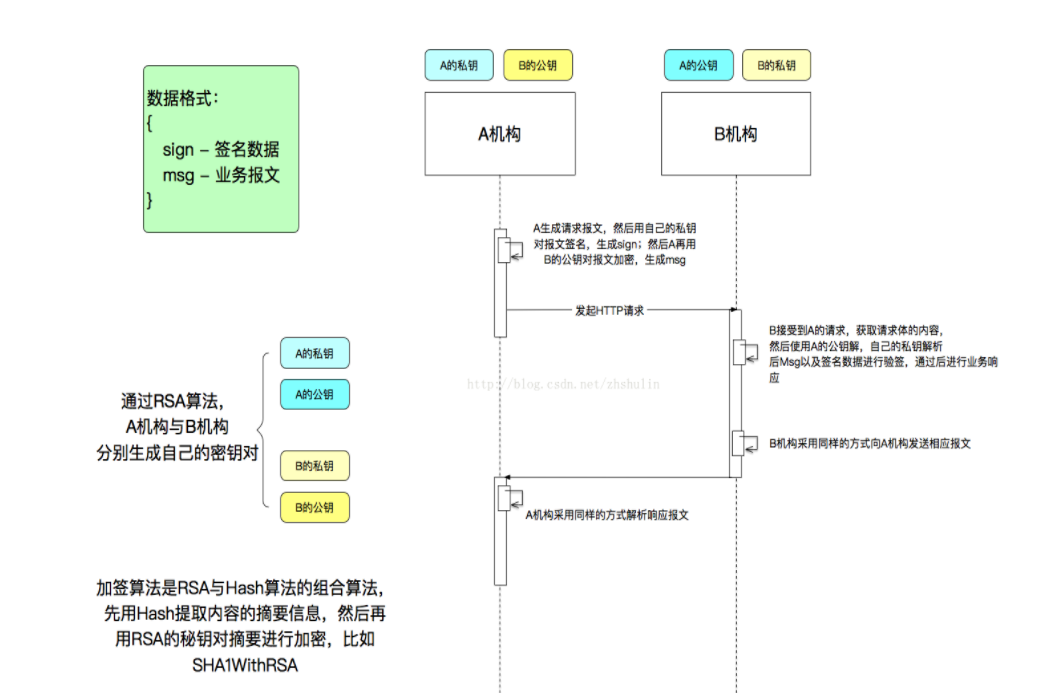有没有办法在Python中创建一个NTFS交接点? 我知道我可以叫junction效用,但它会更好,不依赖于外部工具。
Answer 1:
我的回答了这个类似的问题 ,所以我将我的答案复制到下面。 由于书面的回答,我最后写一个python-只(如果你可以调用使用ctypes的蟒蛇,只有一个模块)模块,以创建,读取,并检查它可以发现路口此文件夹 。 希望帮助。
此外,不同于利用答案使用CreateSymbolicLinkA API,链接的执行应当是支持路口任何Windows版本。 CreateSymbolicLinkA只在Vista +支持。
回答:
蟒蛇ntfslink扩展
或者,如果你想使用pywin32,您可以使用前面提到的方法,和阅读,使用方法:
from win32file import *
from winioctlcon import FSCTL_GET_REPARSE_POINT
__all__ = ['islink', 'readlink']
# Win32file doesn't seem to have this attribute.
FILE_ATTRIBUTE_REPARSE_POINT = 1024
# To make things easier.
REPARSE_FOLDER = (FILE_ATTRIBUTE_DIRECTORY | FILE_ATTRIBUTE_REPARSE_POINT)
# For the parse_reparse_buffer function
SYMBOLIC_LINK = 'symbolic'
MOUNTPOINT = 'mountpoint'
GENERIC = 'generic'
def islink(fpath):
""" Windows islink implementation. """
if GetFileAttributes(fpath) & REPARSE_FOLDER:
return True
return False
def parse_reparse_buffer(original, reparse_type=SYMBOLIC_LINK):
""" Implementing the below in Python:
typedef struct _REPARSE_DATA_BUFFER {
ULONG ReparseTag;
USHORT ReparseDataLength;
USHORT Reserved;
union {
struct {
USHORT SubstituteNameOffset;
USHORT SubstituteNameLength;
USHORT PrintNameOffset;
USHORT PrintNameLength;
ULONG Flags;
WCHAR PathBuffer[1];
} SymbolicLinkReparseBuffer;
struct {
USHORT SubstituteNameOffset;
USHORT SubstituteNameLength;
USHORT PrintNameOffset;
USHORT PrintNameLength;
WCHAR PathBuffer[1];
} MountPointReparseBuffer;
struct {
UCHAR DataBuffer[1];
} GenericReparseBuffer;
} DUMMYUNIONNAME;
} REPARSE_DATA_BUFFER, *PREPARSE_DATA_BUFFER;
"""
# Size of our data types
SZULONG = 4 # sizeof(ULONG)
SZUSHORT = 2 # sizeof(USHORT)
# Our structure.
# Probably a better way to iterate a dictionary in a particular order,
# but I was in a hurry, unfortunately, so I used pkeys.
buffer = {
'tag' : SZULONG,
'data_length' : SZUSHORT,
'reserved' : SZUSHORT,
SYMBOLIC_LINK : {
'substitute_name_offset' : SZUSHORT,
'substitute_name_length' : SZUSHORT,
'print_name_offset' : SZUSHORT,
'print_name_length' : SZUSHORT,
'flags' : SZULONG,
'buffer' : u'',
'pkeys' : [
'substitute_name_offset',
'substitute_name_length',
'print_name_offset',
'print_name_length',
'flags',
]
},
MOUNTPOINT : {
'substitute_name_offset' : SZUSHORT,
'substitute_name_length' : SZUSHORT,
'print_name_offset' : SZUSHORT,
'print_name_length' : SZUSHORT,
'buffer' : u'',
'pkeys' : [
'substitute_name_offset',
'substitute_name_length',
'print_name_offset',
'print_name_length',
]
},
GENERIC : {
'pkeys' : [],
'buffer': ''
}
}
# Header stuff
buffer['tag'] = original[:SZULONG]
buffer['data_length'] = original[SZULONG:SZUSHORT]
buffer['reserved'] = original[SZULONG+SZUSHORT:SZUSHORT]
original = original[8:]
# Parsing
k = reparse_type
for c in buffer[k]['pkeys']:
if type(buffer[k][c]) == int:
sz = buffer[k][c]
bytes = original[:sz]
buffer[k][c] = 0
for b in bytes:
n = ord(b)
if n:
buffer[k][c] += n
original = original[sz:]
# Using the offset and length's grabbed, we'll set the buffer.
buffer[k]['buffer'] = original
return buffer
def readlink(fpath):
""" Windows readlink implementation. """
# This wouldn't return true if the file didn't exist, as far as I know.
if not islink(fpath):
return None
# Open the file correctly depending on the string type.
handle = CreateFileW(fpath, GENERIC_READ, 0, None, OPEN_EXISTING, FILE_FLAG_OPEN_REPARSE_POINT, 0) \
if type(fpath) == unicode else \
CreateFile(fpath, GENERIC_READ, 0, None, OPEN_EXISTING, FILE_FLAG_OPEN_REPARSE_POINT, 0)
# MAXIMUM_REPARSE_DATA_BUFFER_SIZE = 16384 = (16*1024)
buffer = DeviceIoControl(handle, FSCTL_GET_REPARSE_POINT, None, 16*1024)
# Above will return an ugly string (byte array), so we'll need to parse it.
# But first, we'll close the handle to our file so we're not locking it anymore.
CloseHandle(handle)
# Minimum possible length (assuming that the length of the target is bigger than 0)
if len(buffer) < 9:
return None
# Parse and return our result.
result = parse_reparse_buffer(buffer)
offset = result[SYMBOLIC_LINK]['substitute_name_offset']
ending = offset + result[SYMBOLIC_LINK]['substitute_name_length']
rpath = result[SYMBOLIC_LINK]['buffer'][offset:ending].replace('\x00','')
if len(rpath) > 4 and rpath[0:4] == '\\??\\':
rpath = rpath[4:]
return rpath
def realpath(fpath):
from os import path
while islink(fpath):
rpath = readlink(fpath)
if not path.isabs(rpath):
rpath = path.abspath(path.join(path.dirname(fpath), rpath))
fpath = rpath
return fpath
def example():
from os import system, unlink
system('cmd.exe /c echo Hello World > test.txt')
system('mklink test-link.txt test.txt')
print 'IsLink: %s' % islink('test-link.txt')
print 'ReadLink: %s' % readlink('test-link.txt')
print 'RealPath: %s' % realpath('test-link.txt')
unlink('test-link.txt')
unlink('test.txt')
if __name__=='__main__':
example()
调整中的CreateFile的属性,以您的需求,但正常情况下,它应该工作。 随意加以改进。
还应该对文件夹联接工作,如果你使用MOUNTPOINT代替SYMBOLIC_LINK。
你可以这样来检查
sys.getwindowsversion()[0] >= 6
如果你把这个弄成你释放,因为这种形式的符号链接的仅支持在Vista +。
Answer 2:
您可以使用Python的Win32 API模块,如
import win32file
win32file.CreateSymbolicLink(srcDir, targetDir, 1)
看到http://docs.activestate.com/activepython/2.5/pywin32/win32file__CreateSymbolicLink_meth.html更多细节
如果你不希望依赖于过多,你可以随时使用的ctypes和直接调用CreateSymbolicLinl WIN32 API,这无论如何是一个简单的通话
这里是一个使用ctypes的示例调用
import ctypes
kdll = ctypes.windll.LoadLibrary("kernel32.dll")
kdll.CreateSymbolicLinkA("d:\testdir", "d:\testdir_link", 1)
MSDN说最低支持的客户端的Windows Vista
Answer 3:
因为Python 3.5有一个功能CreateJunction在_winapi模块。
import _winapi
_winapi.CreateJunction(source, target)
Answer 4:
你不想依赖外部工具,但你不介意依赖于特定的环境? 我想你可以有把握地认为,如果是NTFS,你正在运行时,结效用可能会在那里。
但是,如果你的意思是你不想调出到外部程序,我已经找到了ctypes的东西是无价的。 它可以让你直接从Python中调用Windows的DLL。 而且我敢肯定它在标准的Python版本现在。
你只需要弄清楚哪些Windows DLL的CreateJunction()或任何Windows调用它)API调用并设置参数和调用。 祝您好运与中,微软似乎并不支持非常好。 你可以拆卸的Sysinternals junction程序或linkd或其他工具之一来了解他们是如何做到这一点。
我,我很懒惰,我只是打电话junction作为外部进程:-)
Answer 5:
基于由查尔斯接受的答案,在这里改善(跨平台)的功能版本(Python的2.7和3.5+)。
- islink()现在还检测Windows下文件的符号链接(就像POSIX当量)
- parse_reparse_buffer()和的readlink()现在实际检测重分析点的类型(NTFS结,符号连接或通用)这是需要正确解码的路径
- 的readlink()不会再失败与NTFS路口或目录符号链接拒绝(除非你真的没有权限读取属性)访问
import os
import struct
import sys
if sys.platform == "win32":
from win32file import *
from winioctlcon import FSCTL_GET_REPARSE_POINT
__all__ = ['islink', 'readlink']
# Win32file doesn't seem to have this attribute.
FILE_ATTRIBUTE_REPARSE_POINT = 1024
# These are defined in win32\lib\winnt.py, but with wrong values
IO_REPARSE_TAG_MOUNT_POINT = 0xA0000003 # Junction
IO_REPARSE_TAG_SYMLINK = 0xA000000C
def islink(path):
"""
Cross-platform islink implementation.
Supports Windows NT symbolic links and reparse points.
"""
if sys.platform != "win32" or sys.getwindowsversion()[0] < 6:
return os.path.islink(path)
return bool(os.path.exists(path) and GetFileAttributes(path) &
FILE_ATTRIBUTE_REPARSE_POINT == FILE_ATTRIBUTE_REPARSE_POINT)
def parse_reparse_buffer(buf):
""" Implementing the below in Python:
typedef struct _REPARSE_DATA_BUFFER {
ULONG ReparseTag;
USHORT ReparseDataLength;
USHORT Reserved;
union {
struct {
USHORT SubstituteNameOffset;
USHORT SubstituteNameLength;
USHORT PrintNameOffset;
USHORT PrintNameLength;
ULONG Flags;
WCHAR PathBuffer[1];
} SymbolicLinkReparseBuffer;
struct {
USHORT SubstituteNameOffset;
USHORT SubstituteNameLength;
USHORT PrintNameOffset;
USHORT PrintNameLength;
WCHAR PathBuffer[1];
} MountPointReparseBuffer;
struct {
UCHAR DataBuffer[1];
} GenericReparseBuffer;
} DUMMYUNIONNAME;
} REPARSE_DATA_BUFFER, *PREPARSE_DATA_BUFFER;
"""
# See https://docs.microsoft.com/en-us/windows-hardware/drivers/ddi/content/ntifs/ns-ntifs-_reparse_data_buffer
data = {'tag': struct.unpack('<I', buf[:4])[0],
'data_length': struct.unpack('<H', buf[4:6])[0],
'reserved': struct.unpack('<H', buf[6:8])[0]}
buf = buf[8:]
if data['tag'] in (IO_REPARSE_TAG_MOUNT_POINT, IO_REPARSE_TAG_SYMLINK):
keys = ['substitute_name_offset',
'substitute_name_length',
'print_name_offset',
'print_name_length']
if data['tag'] == IO_REPARSE_TAG_SYMLINK:
keys.append('flags')
# Parsing
for k in keys:
if k == 'flags':
fmt, sz = '<I', 4
else:
fmt, sz = '<H', 2
data[k] = struct.unpack(fmt, buf[:sz])[0]
buf = buf[sz:]
# Using the offset and lengths grabbed, we'll set the buffer.
data['buffer'] = buf
return data
def readlink(path):
"""
Cross-platform implenentation of readlink.
Supports Windows NT symbolic links and reparse points.
"""
if sys.platform != "win32":
return os.readlink(path)
# This wouldn't return true if the file didn't exist
if not islink(path):
# Mimic POSIX error
raise OSError(22, 'Invalid argument', path)
# Open the file correctly depending on the string type.
if type(path) is type(u''):
createfilefn = CreateFileW
else:
createfilefn = CreateFile
# FILE_FLAG_OPEN_REPARSE_POINT alone is not enough if 'path'
# is a symbolic link to a directory or a NTFS junction.
# We need to set FILE_FLAG_BACKUP_SEMANTICS as well.
# See https://docs.microsoft.com/en-us/windows/desktop/api/fileapi/nf-fileapi-createfilea
handle = createfilefn(path, GENERIC_READ, 0, None, OPEN_EXISTING,
FILE_FLAG_BACKUP_SEMANTICS | FILE_FLAG_OPEN_REPARSE_POINT, 0)
# MAXIMUM_REPARSE_DATA_BUFFER_SIZE = 16384 = (16 * 1024)
buf = DeviceIoControl(handle, FSCTL_GET_REPARSE_POINT, None, 16 * 1024)
# Above will return an ugly string (byte array), so we'll need to parse it.
# But first, we'll close the handle to our file so we're not locking it anymore.
CloseHandle(handle)
# Minimum possible length (assuming that the length is bigger than 0)
if len(buf) < 9:
return type(path)()
# Parse and return our result.
result = parse_reparse_buffer(buf)
if result['tag'] in (IO_REPARSE_TAG_MOUNT_POINT, IO_REPARSE_TAG_SYMLINK):
offset = result['substitute_name_offset']
ending = offset + result['substitute_name_length']
rpath = result['buffer'][offset:ending].decode('UTF-16-LE')
else:
rpath = result['buffer']
if len(rpath) > 4 and rpath[0:4] == '\\??\\':
rpath = rpath[4:]
return rpath




